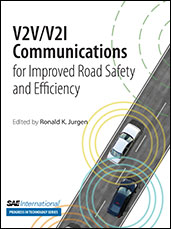Technical Paper
Wireless Technologies: Overview for Automatic Vehicle Location Applications
1998-02-23
981149
Defining the wireless marketing is a challenge in today's world. Companies interested in capitalizing on the wireless market for automatic vehicle location (AVL) have a number of wireless options from which to choose. One of the most exciting wireless combinations is GPS (Global Positioning System) and cellular systems. The Global Positioning System (GPS)/cellular combination can be used to create Automatic Vehicle Location systems for a wide variety of applications, from fleet management to personal security. Unfortunately, no single wireless network fits all the possible AVL applications, and choosing the best network for an application is essential to system performance. This paper reviews the current wireless technologies available in the market-place, discusses why ATX chose the wireless technology it uses, and gazes into the crystal ball to forecast the future of wireless.


